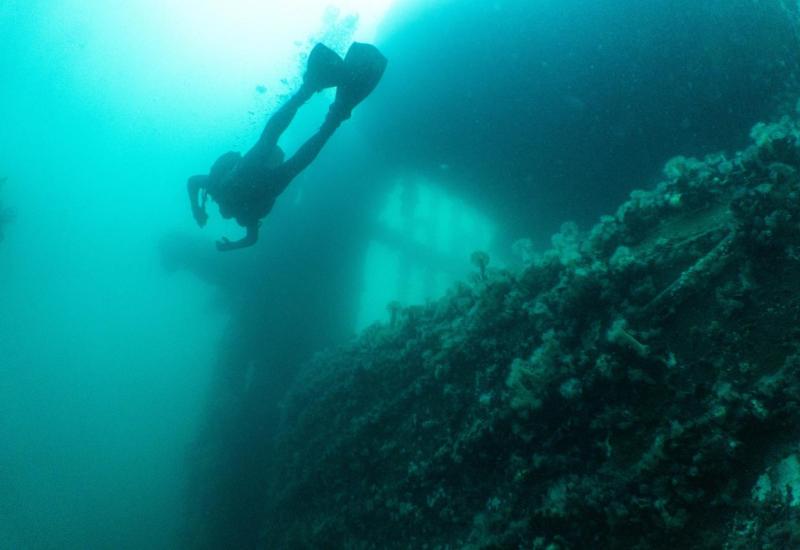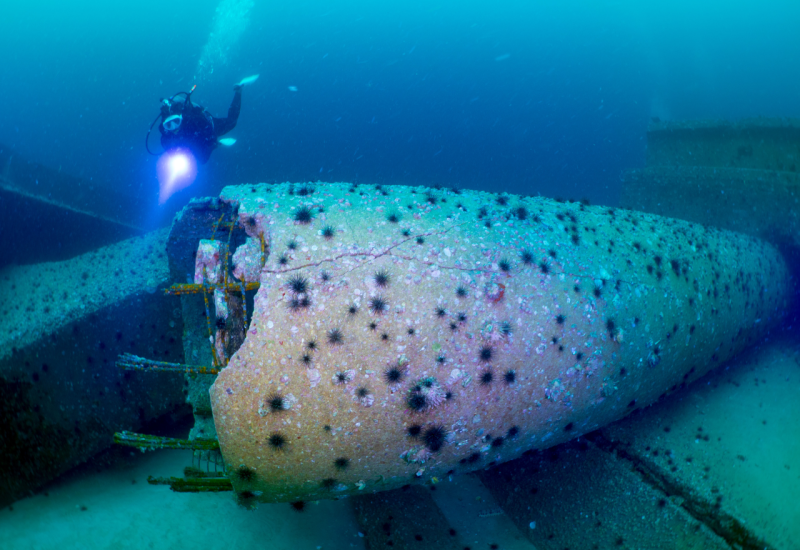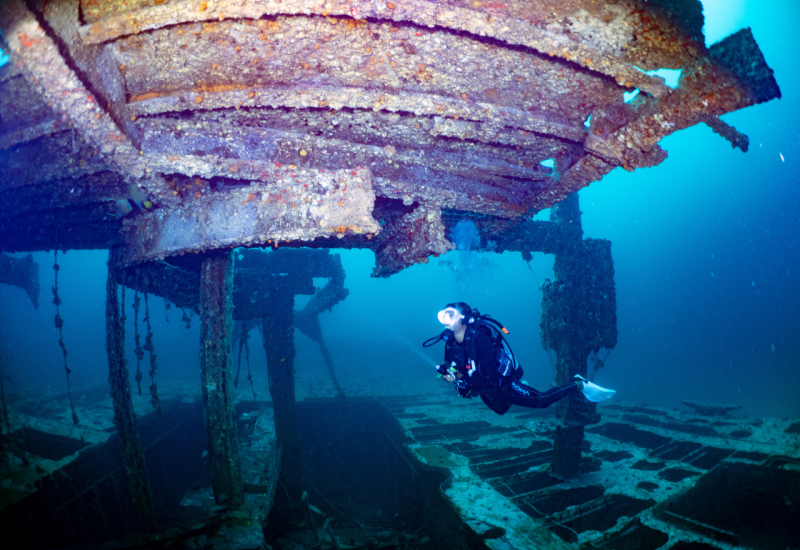The Importance of Learning a Wreck's History
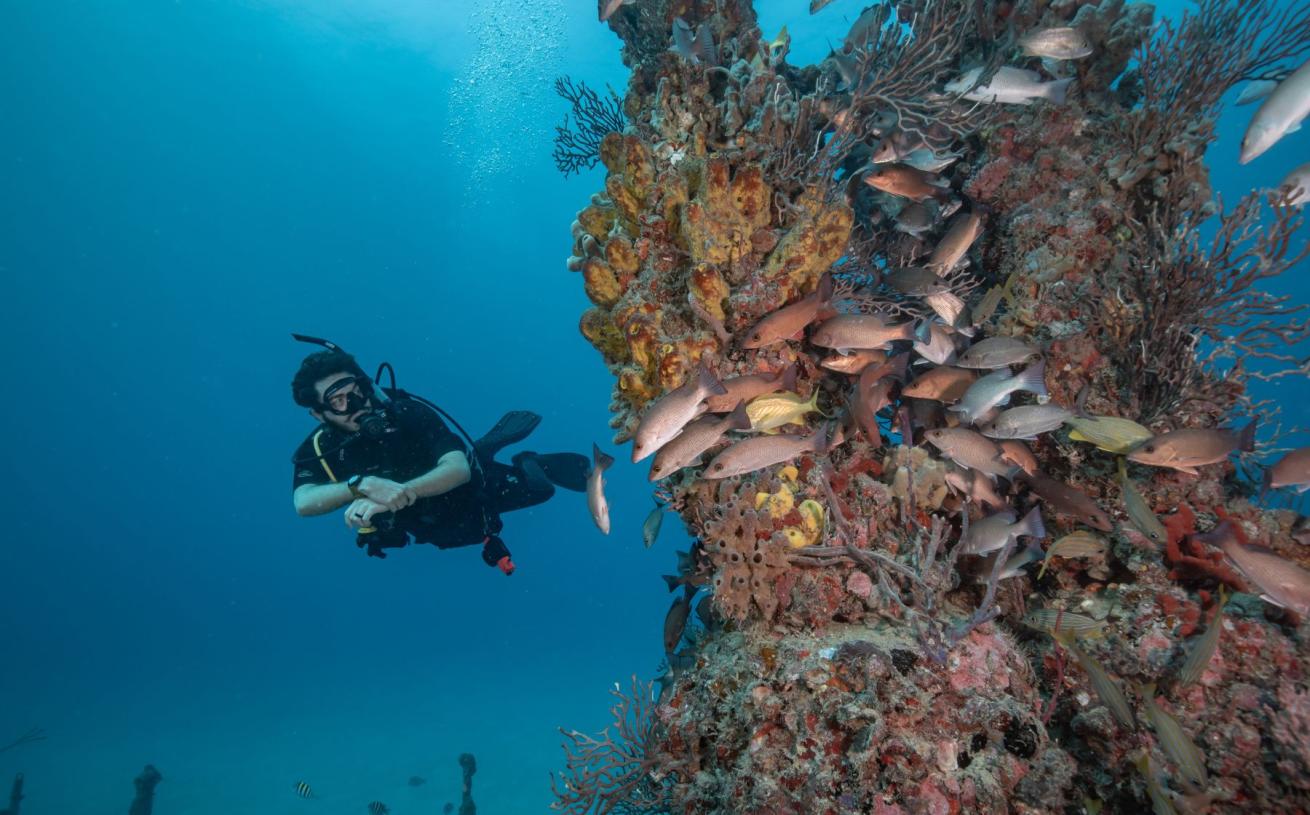
Wrecks provide unique dive environments that engage your imagination beyond just marine life. You might encounter a purpose-sunk artificial reef, a boat or plane with military history, or simply a scattering of iron objects whose straight lines and 90-degree angles stand out from typical reef shapes.
While these distinctive dive experiences can trigger very different emotions, they have something in common. Each wreck has a history, one you can intimately explore as a diver. The more time you spend at a site, the more you begin to understand. It’s like watching a movie for a second time; you’re more likely to catch subtle (but important) details you missed during the first viewing. Similarly, the more you know about why the wreck settled under the sea, the more you will know to seek out when actually exploring it.
Learning about a wreck often leads to more questions than you first had. You might talk to the crew on the dive boat, do some online searches once you get home or dig deeper to seek out answers in a community of like-minded historians.
John Stella, a lifetime diver working for Scubapro, has been diving on shipwrecks for many years. In 2013, he received a life-changing invite from a prominent marine archaeologist, George Koutsouflakis, Ph.D.
Related Reading: The Historic Underwater Panel You Need to Know About
“George took me to dive an ancient Roman ship dated 130–80 B.C.E. Now, after nine trips to Greece to dive on ancient shipwrecks, I’m part of a team that is excavating a Byzantine-era shipwreck dated back to the 5th century A.D. and piecing together another story from the past.”
These underwater experiences are special, and part of why divers love to share their stories. Barry Clifford took his storytelling to the next level after he discovered the Whydah Gally pirate shipwreck off the coast of Cape Cod, Massachusetts, in 1984. He opened the Whydah Pirate Museum to showcase the artifacts found.
Barry’s son, Brandon, grew up on the ocean around divers and maritime archaeologists, so it was almost inevitable he would share the same passion.
“Exploring the Whydah shipwreck site has been a truly incredible journey,” he says. “I feel very connected to the environment we work in and have a deep sense of reverence for the artifacts and history of the shipwreck.” This reverence is a fundamental part of wreck diving.
Related Reading: A Wreck Like No Other: Diving Into the Transatlantic Slave Trade
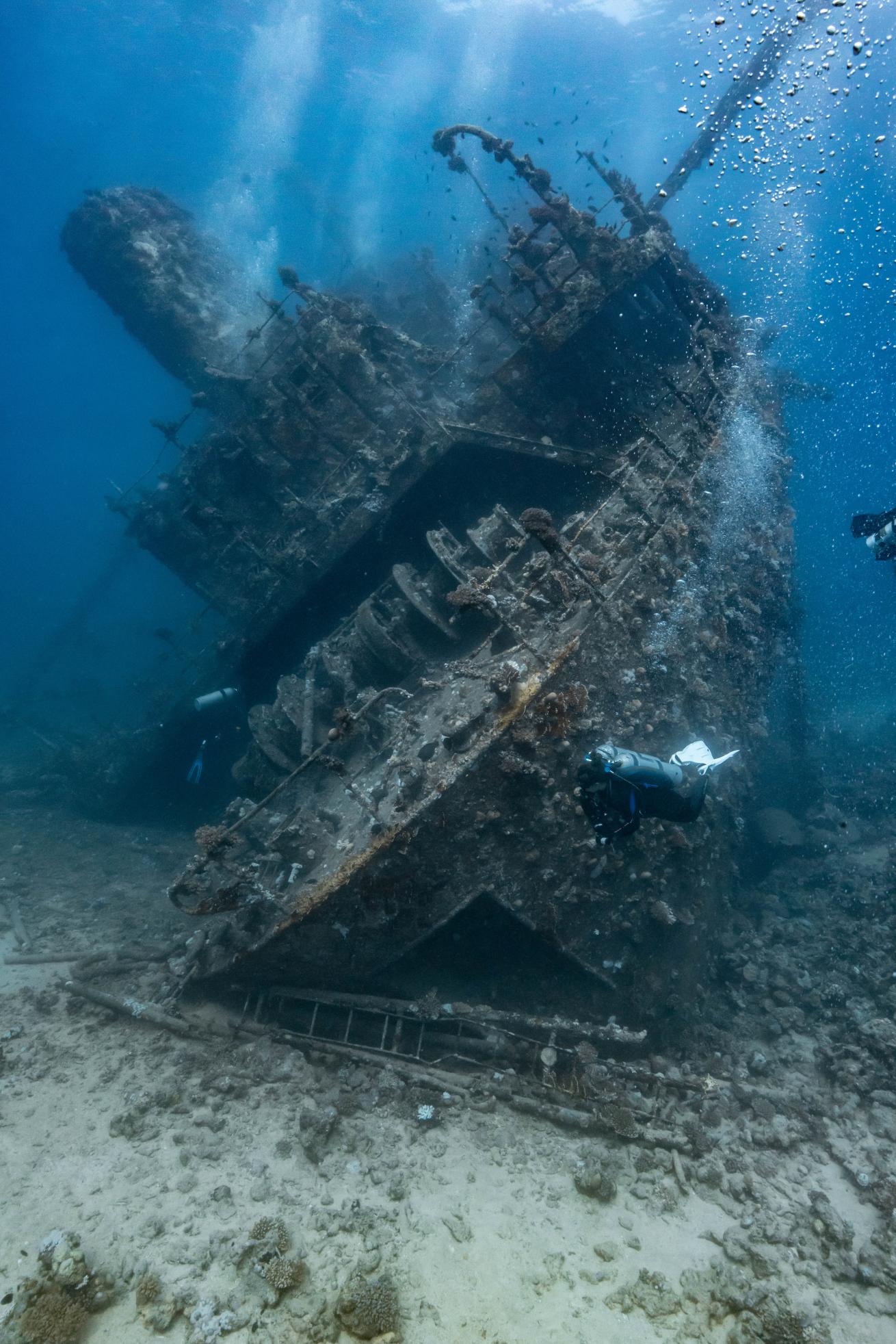
Candice Landau
Another part is that vibrant marine life we all love, since many wrecks turn into homes for corals, schools of fish and all sorts of aquatic organisms. If you're lucky to regularly dive certain wrecks, you can start to appreciate the seasonality of life by noting the proliferation of different species during different months.
Purpose-sunk shipwrecks are different, but still offer fun dives along railings and through cutouts designed for recreational divers. These may not come with harrowing origin stories, but each still has the innate ability to activate your imagination.
Wrecks act as both reminders and records of the sea’s most fascinating stories. All you have to do is dive in.

